Cyber threats grow increasingly sophisticated, persistent, and damaging, with cyber attacks becoming a key challenge organizations face. Businesses and governments alike are investing more resources into protecting their digital infrastructure, leading to an unprecedented demand for skilled cybersecurity analysts.
However, landing a role in this fast-paced and highly technical field—where analyzing and responding to cyber threats is a core responsibility—begins with a powerful resume that not only reflects your qualifications but also communicates your unique value as a security expert.
In this comprehensive guide, we’ll break down every section of a high-impact resume, offering insights, tips, and best practices to help you stand out to recruiters and hiring managers.
Cybersecurity Analyst Resume Examples
These samples showcase how to present your technical skills, professional experience, certifications, and accomplishments in a way that captures the attention of hiring managers and applicant tracking systems alike.
Cybersecurity Analyst Resume

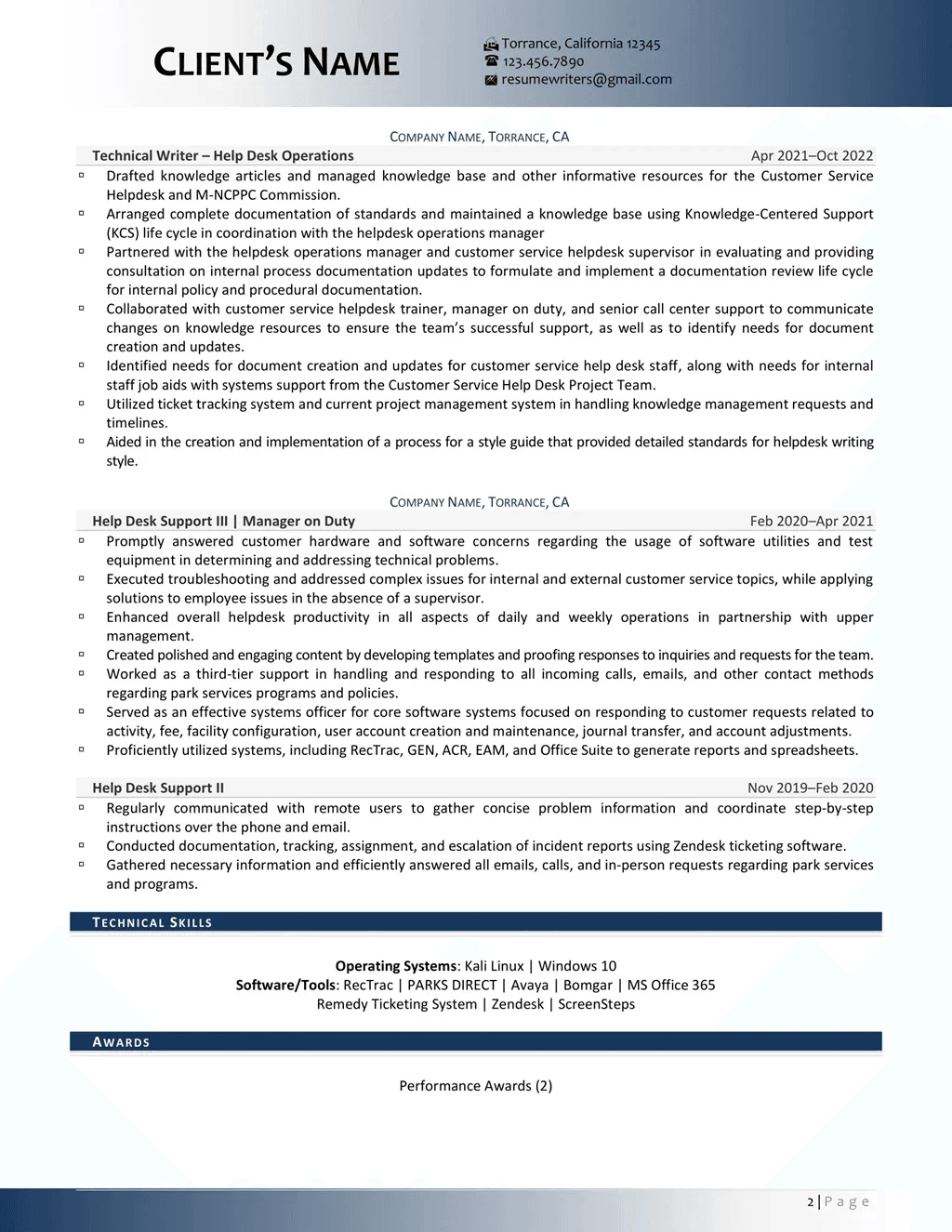
Download your own copy of this cybersecurity analyst resume example.
Cybersecurity Manager Resume
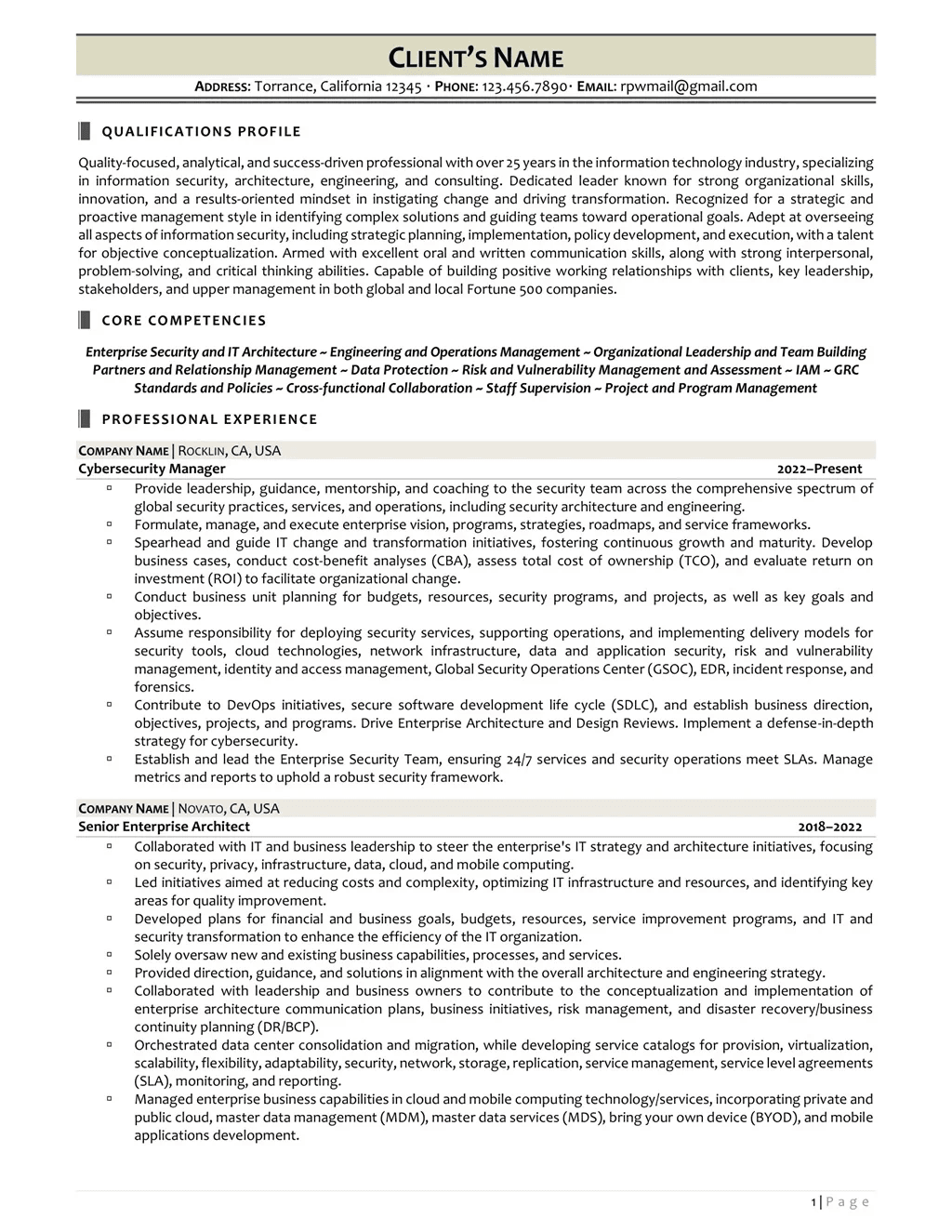
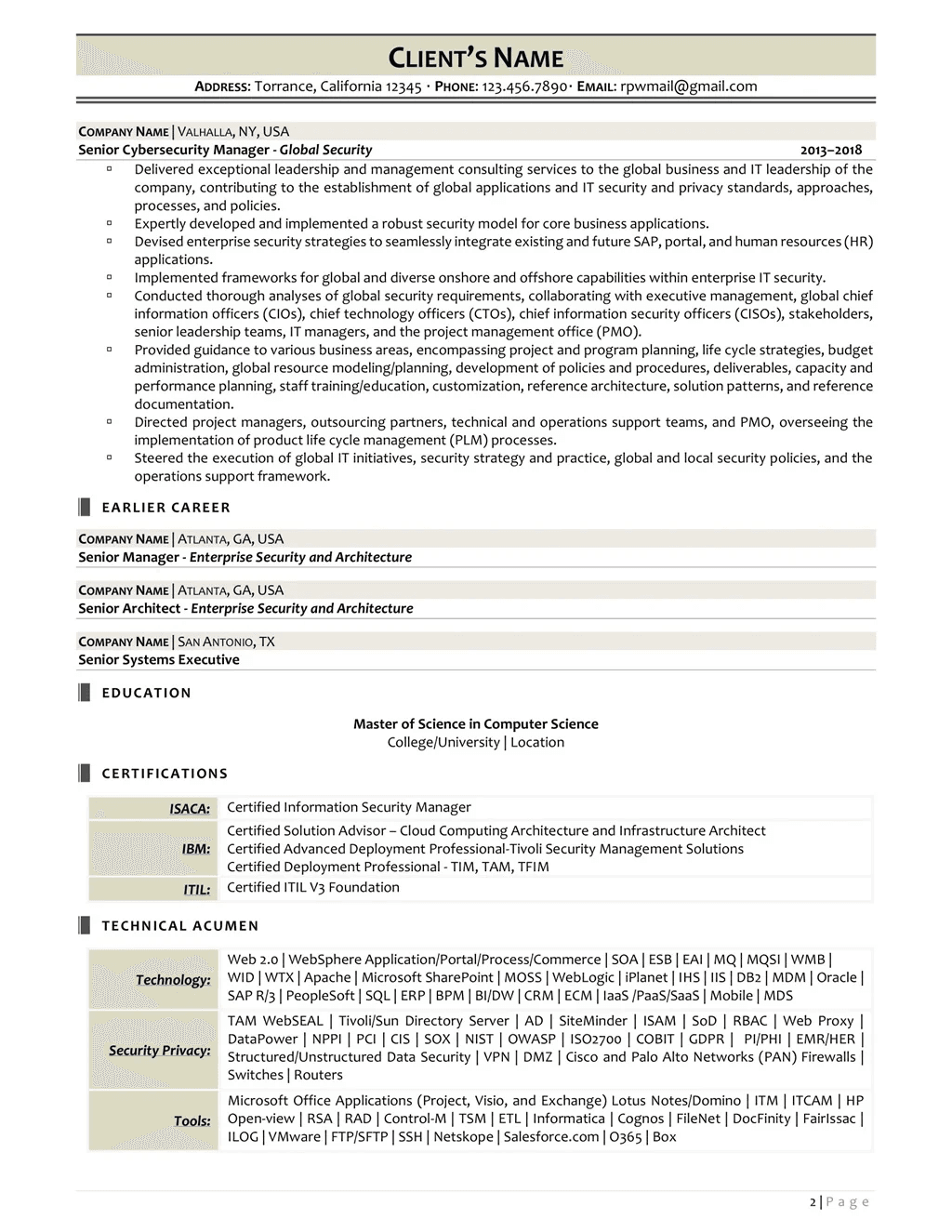
Download your own copy of this cybersecurity manager resume example.
Cybersecurity Director Resume
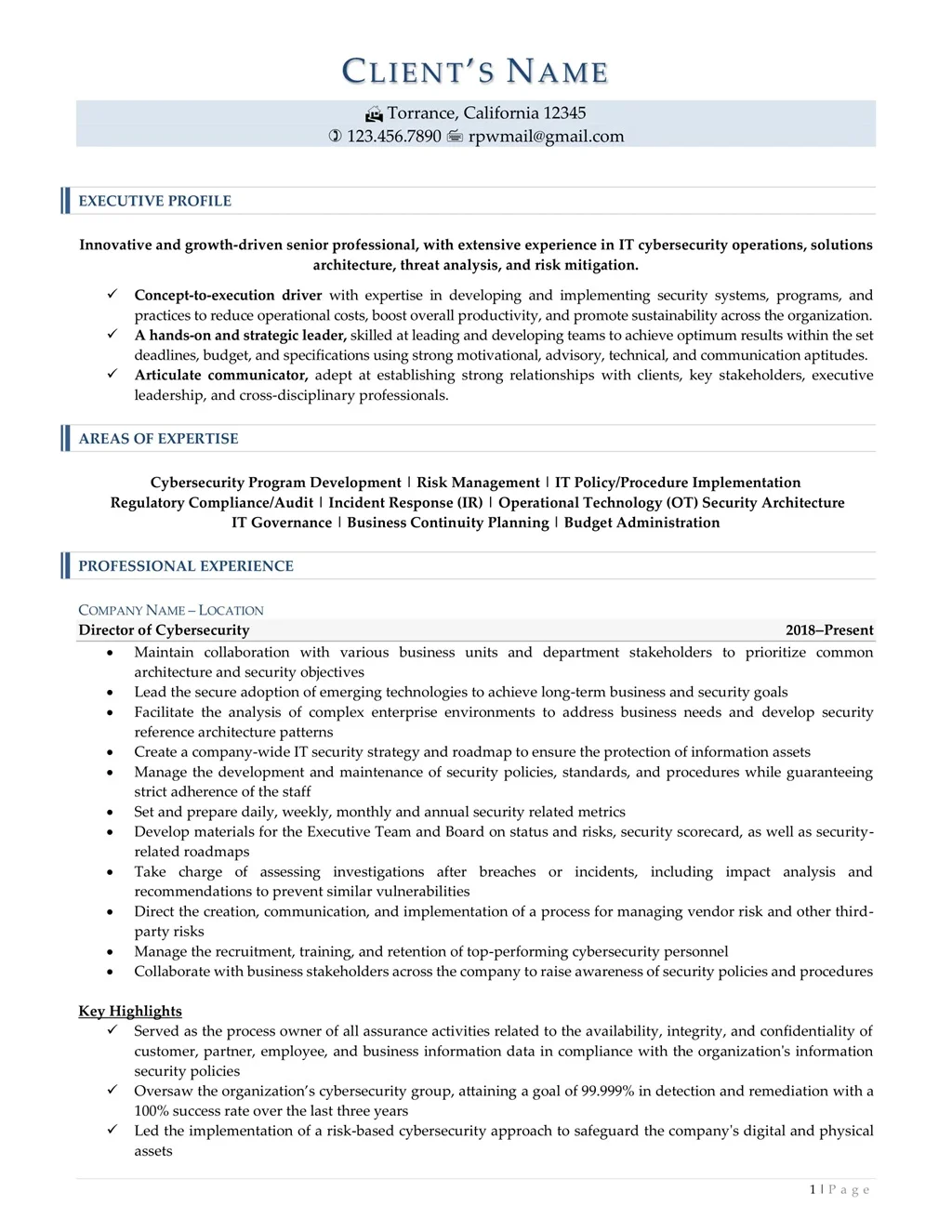
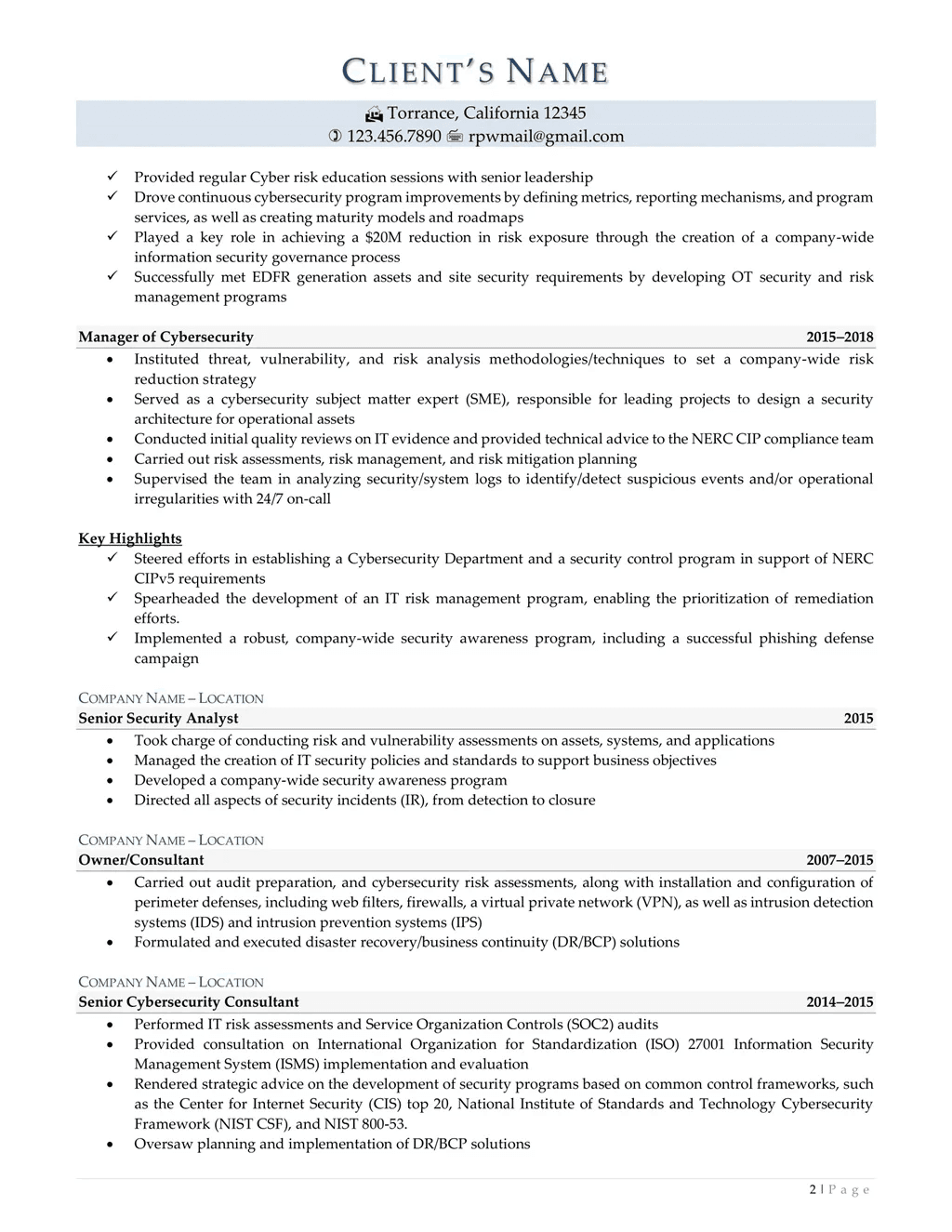
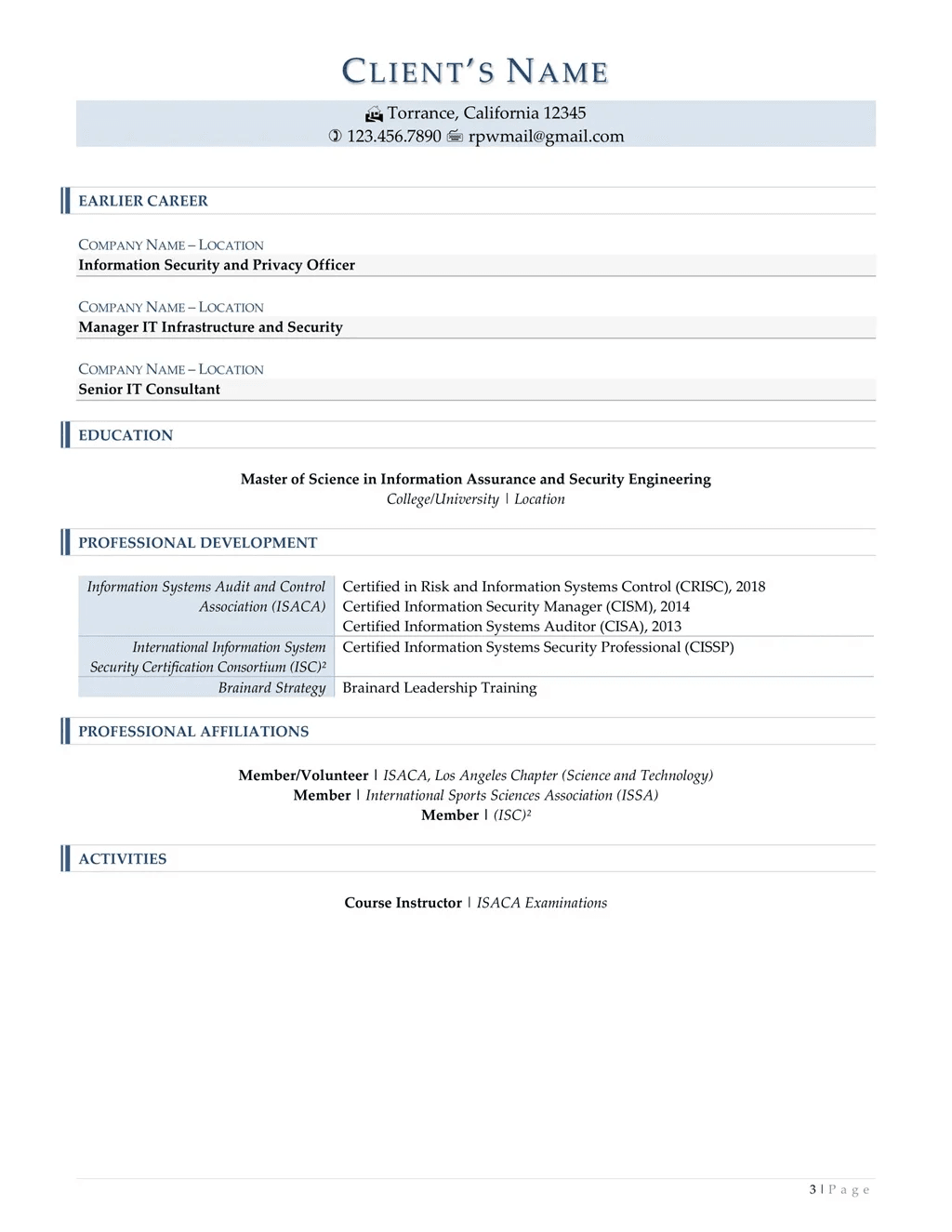
Download your own copy of this cybersecurity director resume example.
Why a Strong Cybersecurity Analyst Resume Matters
Your resume is your first and often only chance to make a lasting impression. In the cybersecurity domain—where precision, expertise, and attention to detail are paramount—your resume should reflect the same qualities. Employers need to see not only your technical prowess but also your strategic thinking, problem-solving skills, and ability to protect and strengthen digital systems.
In addition, many organizations use applicant tracking systems (ATS) to screen resumes before they’re reviewed by a human. An effective cyber security resume must be optimized to pass through these systems by aligning with keywords, job requirements, and proper formatting, ensuring it appeals to both ATS and hiring managers. Ultimately, a strong resume will help you:
- Demonstrate mastery of tools, frameworks, and techniques
- Communicate real-world impact through measurable achievements
- Showcase certifications that verify your expertise
- Showcase key skills and relevant certifications that align with the cyber security role
- Present a cohesive professional narrative
Key Sections of a Cybersecurity Analyst Resume
A standout resume is more than a list of past jobs. It’s a carefully structured document that highlights your qualifications, experience, and strengths in a clear, strategic way. When applying for a cybersecurity analyst position, be sure to customize your resume for each role by analyzing job postings to identify important keywords and requirements.
Below are the key sections that should be included, along with detailed explanations of what to include and how to optimize each one.
1. Contact Information
This section may seem straightforward, but it’s essential that your contact details are up-to-date and professional.
What to Include:
- Full Name (Use the name you go by professionally)
- Phone Number (Preferably a mobile number you check regularly)
- Professional Email Address (Avoid outdated or informal addresses)
- LinkedIn Profile (Ensure it matches your resume content)
- Portfolio, GitHub, or Cybersecurity Blog (Optional, but highly recommended if relevant)
Tips:
- Use a personal but professional email address like john.doe@gmail.com.
- Don’t include unnecessary personal information such as age, gender, marital status, or a photo (unless you’re in a country where it’s customary).
- Ensure that your LinkedIn profile includes endorsements, a professional headshot, and an up-to-date summary and experience section.
2. Resume Summary or Professional Profile
The professional summary is your elevator pitch. It’s typically 3–5 lines at the top of your cybersecurity analyst resume that introduces who you are, what you specialize in, and the value you bring to an organization. This section helps employers immediately understand your background without having to read the entire resume.
What to Include:
- Years of experience in cybersecurity or related fields
- Areas of expertise (e.g., threat intelligence, incident response)
- Notable industries or sectors you’ve worked in (e.g., finance, healthcare, defense, security operations center)
- Demonstrate your technical expertise and experience as a security analyst or cybersecurity professional.
- Key certifications (e.g., CISSP, CEH)
- Major accomplishments or impact metrics (e.g., “reduced breach attempts by 35%”)
Why It Matters: Hiring managers often skim resumes. A strong summary ensures they quickly grasp your qualifications and are motivated to keep reading. It also serves as a framework for the rest of the resume, so make sure it’s relevant to the job you’re applying for.
3. Core Competencies or Technical Skills
The skills section is a critical component of your cybersecurity analyst resume. It highlights both your technical skills and interpersonal strengths, which are crucial for success in this role. Break this section into categories for easier scanning.
Technical Skills to Include:
- Security Tools & Platforms: SIEM (Splunk, QRadar), IDS/IPS, Nessus, Wireshark
- Threat Detection Capabilities: Experience with real-time threat identification and mitigation using advanced tools and techniques.
- System Security: Best practices for safeguarding IT infrastructure, including network segmentation and vulnerability management.
- Security Protocols: Designing, implementing, and optimizing security protocols to ensure data protection and compliance.
- Security Solutions: Deployment of comprehensive cybersecurity frameworks and tools such as firewalls, SIEM, and zero-trust models.
- Access Management: Implementation of multi-factor authentication and user identity controls to reduce security breaches.
- Event Management: Coordination and orchestration of security events, incident responses, and integration of SIEM systems.
- Network Security Management: Development of firewall protocols, ongoing security practices, vulnerability assessments, and incident response.
- Programming & Scripting: Python, PowerShell, Bash, SQL
- Compliance Frameworks: NIST, ISO 27001, GDPR, HIPAA, PCI-DSS
Soft Skills to Highlight:
- Critical thinking and analytical reasoning
- Communication (oral and written)
- Collaboration across departments
- Time management under high-pressure environments
- Leadership and mentoring abilities (for senior roles)
Tips:
- Tailor your skills to each job description.
- Use keywords from the job posting to boost ATS compatibility.
- Focus on advanced or in-demand skills to differentiate yourself.
4. Professional Experience
The experience section of your cybersecurity analyst resume is where you provide proof of your qualifications. Rather than listing tasks, this section should demonstrate results, problem-solving ability, and technological competence. Use bullet points under each position to highlight your responsibilities and accomplishments.
Structure: Job Title | Company Name – City, State | Month Year – Month Year
What to Include:
- A brief sentence summarizing your role and scope of responsibility
- Specific security projects or challenges you tackled
- Technologies, frameworks, or methodologies used
- Outcomes of your work, ideally backed by data or KPIs
Examples of Experience Entries:
- Led a team that implemented enterprise-wide security controls, reducing phishing attacks by 40%.
- Analyzed daily threat logs using Splunk to identify and mitigate critical vulnerabilities.
- Coordinated incident response during a ransomware attack, minimizing downtime to under 6 hours.
- Conducted quarterly audits to ensure compliance with ISO 27001 and GDPR standards.
- Led incident response efforts to contain and remediate security incidents, improving incident response time by 30%.
- Collaborated with and managed teams of security analysts to monitor network traffic and respond to security threats.
- Identified key vulnerabilities through comprehensive vulnerability assessments and security audits.
- Conducted penetration tests to evaluate network and infrastructure defenses.
- Proactively mitigated security risks by implementing robust security measures and enhancing security protocols.
- Monitored network traffic for suspicious activity, enabling early detection of potential threats.
Tips:
- Begin each bullet point with a strong action verb.
- Quantify achievements whenever possible.
- Include only relevant positions, ideally from the last 10–15 years.
- Show career progression, leadership, and cross-functional collaboration.
5. Certifications
In the cybersecurity field, listing relevant certifications is highly valued and often required. They validate your expertise, demonstrate specialized knowledge, and show that you’re committed to continuous professional development.
Popular Cybersecurity Certifications:
- CompTIA Security+ – Ideal for entry-level roles; covers foundational cybersecurity knowledge.
- CISSP (Certified Information Systems Security Professional) – Also known as Systems Security Professional CISSP, this is an advanced certification for experienced professionals in leadership roles, demonstrating comprehensive expertise in security practices, risk management, and standards.
- CEH (Certified Ethical Hacker) – Certified Ethical Hacker (CEH) focuses on penetration testing and ethical hacking methodologies, validating technical skills and ongoing professional development.
- CISM (Certified Information Security Manager) – Emphasizes security governance and risk management.
- CySA+ (CompTIA Cybersecurity Analyst) – Intermediate-level credential focused on threat detection and response.
- GSEC (GIAC Security Essentials Certification) – General security practices and methodologies.
- CCSP (Certified Cloud Security Professional) – Designed for professionals working with cloud-based systems.
Tips:
- Include the issuing organization (e.g., CompTIA, (ISC)²).
- Add the month/year obtained and expiration date if applicable.
- Place this section prominently if certifications are a major requirement for the role.
6. Education
While experience and certifications often carry more weight in your cybersecurity analyst resume, your educational background still matters—especially if it’s in a relevant field.
What to Include:
- Degree(s) earned (e.g., B.S. in Cybersecurity, M.S. in Information Assurance)
- University name and location
- Graduation date (or expected graduation)
- Honors, GPA (if 3.5+), and relevant coursework (for recent grads)
Additional Details (Optional):
- Capstone or thesis topics
- Academic projects related to security, forensics, or networking
Tips:
- If you’re an entry-level candidate, place this section above “Professional Experience.”
- Include relevant minors or double majors (e.g., Computer Science, Information Systems).
7. Projects (Optional but Valuable)
Including a projects section in your cybersecurity analyst resume is especially beneficial for candidates with limited work experience or those looking to demonstrate hands-on skills outside of traditional roles.
Types of Projects:
- Created a home lab to simulate and defend against common attack vectors.
- Developed a Python script to automate vulnerability scanning.
- Participated in cybersecurity competitions such as CTFs or Hack The Box challenges.
- Contributed to open-source security tools or GitHub repositories.
- Conducted a penetration test and submitted a professional report with remediation steps.
Tips:
- Describe your goals, tools used, challenges faced, and the outcome.
- Focus on how these projects demonstrate your initiative, technical ability, and problem-solving skills.
- Link to portfolios or GitHub if relevant.
8. Professional Affiliations (Optional)
Being a member of professional organizations adds credibility and shows that you’re actively involved in the cybersecurity community.
Examples:
- (ISC)²
- ISACA
- InfraGard
- SANS Institute
- OWASP (Open Web Application Security Project)
- EC-Council
Mention any leadership roles, volunteer activities, or conference participation.
9. Awards and Achievements (Optional)
Showcase your excellence by including any awards or recognitions you’ve received for cybersecurity-related achievements.
Examples:
- Recognized as “Top Performer” in your security team
- Won a national or regional CTF competition
- Earned an internal company award for innovation or incident response
- Published in a cybersecurity journal or blog
Awards help reinforce your value and make your resume memorable.
10. Languages and International Experience (Optional)
Multilingual professionals or those with international work experience may have a competitive edge, especially in global companies or roles requiring international compliance knowledge.
Include:
- Languages spoken/written (and proficiency level)
- Experience working in or with foreign teams or clients
- Knowledge of international cybersecurity standards
ATS Optimization: Resume Formatting Tips
To ensure your cybersecurity analyst resume is parsed correctly by ATS (applicant tracking system) tools:
- Use standard fonts like Arial, Calibri, or Times New Roman.
- Stick to simple, clean formatting (no columns, tables, or graphics).
- Use traditional section headers (“Skills,” “Education,” etc.).
- Incorporate keywords from the job description.
- Save the file in a widely accepted format like .docx or .pdf.
Common Mistakes to Avoid
Even qualified cybersecurity professionals make critical resume errors. Here are the most common ones:
- Generic resume: Fails to address the specific job description.
- Too much technical jargon: Makes the content hard to understand for non-technical recruiters.
- Lack of quantifiable achievements: Without metrics, it’s difficult to gauge your impact.
- Ignoring ATS rules: Overuse of design elements can prevent parsing.
- Typos and grammatical errors: They undermine your credibility in a field where accuracy is vital.
Need Expert Help With Your Cybersecurity Resume?
Consider working with a certified professional resume writer who understands the intricacies of cybersecurity hiring standards and ATS optimization. With the right strategy, your resume can open doors to some of the most exciting and impactful roles in tech.
Start crafting your standout cybersecurity analyst resume today to take the next big step in your career.








